-
FACTOR ANALYSIS
-
\r\n\r\n\r\nValue chain Analysis
-
\r\n\r\n\r\nPorter's
-
Five Forces Analysis
-
\r\n\r\n\r\nBargaining Power of Suppliers
-
\r\n\r\n\r\nBargaining
-
Power of Buyers
-
\r\n\r\n\r\nThreat of New Entrants
-
\r\n\r\n\r\nThreat
-
of Substitutes
-
\r\n\r\n\r\nIntensity of Rivalry
-
\r\n\r\n\r\n\r\n\r\nCOVID-19
-
Impact Analysis
-
\r\n\r\n\r\nMarket Impact Analysis
-
\r\n\r\n\r\nRegional
-
Impact
-
\r\n\r\n\r\nOpportunity and Threat Analysis
-
\r\n\r\n\r\n\r\n\r\n\r\n\r\n\r\n\r\nOmega
-
Market, BY Source (USD Billion)
-
\r\n\r\n\r\nFish Oil
-
\r\n\r\n\r\nAlgal
-
Oil
-
\r\n\r\n\r\nKrill Oil
-
\r\n\r\n\r\nFlaxseed Oil
-
\r\n\r\n\r\nChia
-
Seed Oil
-
\r\n\r\n\r\n\r\n\r\nOmega 3 Market, BY
-
Form (USD Billion)
-
\r\n\r\n\r\nSoftgel Capsules
-
\r\n\r\n\r\nLiquid
-
\r\n\r\n\r\nPowder
-
\r\n\r\n\r\nFunctional
-
Foods
-
\r\n\r\n\r\nBeverages
-
\r\n\r\n\r\n\r\n\r\nOmega
-
Market, BY Application (USD Billion)
-
\r\n\r\n\r\nDietary
-
Supplements
-
\r\n\r\n\r\nPharmaceuticals
-
\r\n\r\n\r\nFunctional
-
Foods
-
\r\n\r\n\r\nAnimal Feed
-
\r\n\r\n\r\nCosmetics
-
\r\n\r\n\r\n\r\n\r\nOmega
-
Market, BY End Use (USD Billion)
-
\r\n\r\n\r\nNutrition
-
Health
-
\r\n\r\n\r\nSports Fitness
-
\r\n\r\n\r\nMedical
-
\r\n\r\n\r\nPersonal
-
Care
-
\r\n\r\n\r\nAnimal Health
-
\r\n\r\n\r\n\r\n\r\nOmega
-
Market, BY Regional (USD Billion)
-
\r\n\r\n\r\nNorth America
-
\r\n\r\n\r\nUS
-
\r\n\r\n\r\nCanada
-
\r\n\r\n\r\n\r\n\r\nEurope
-
\r\n\r\n\r\nGermany
-
\r\n\r\n\r\nUK
-
\r\n\r\n\r\nFrance
-
\r\n\r\n\r\nRussia
-
\r\n\r\n\r\nItaly
-
\r\n\r\n\r\nSpain
-
\r\n\r\n\r\nRest
-
of Europe
-
\r\n\r\n\r\n\r\n\r\nAPAC
-
\r\n\r\n\r\nChina
-
\r\n\r\n\r\nIndia
-
\r\n\r\n\r\nJapan
-
\r\n\r\n\r\nSouth
-
Korea
-
\r\n\r\n\r\nMalaysia
-
\r\n\r\n\r\nThailand
-
\r\n\r\n\r\nIndonesia
-
\r\n\r\n\r\nRest
-
of APAC
-
\r\n\r\n\r\n\r\n\r\nSouth America
-
\r\n\r\n\r\nBrazil
-
\r\n\r\n\r\nMexico
-
\r\n\r\n\r\nArgentina
-
\r\n\r\n\r\nRest
-
of South America
-
\r\n\r\n\r\n\r\n\r\nMEA
-
\r\n\r\n\r\nGCC
-
Countries
-
\r\n\r\n\r\nSouth Africa
-
\r\n\r\n\r\nRest
-
of MEA
-
\r\n\r\n\r\n\r\n\r\n\r\n\r\n
-
\r\n
-
\r\n\r\n\r\nCompetitive
-
Landscape
-
\r\n\r\n\r\nOverview
-
\r\n\r\n\r\nCompetitive
-
Analysis
-
\r\n\r\n\r\nMarket share Analysis
-
\r\n\r\n\r\nMajor
-
Growth Strategy in the Omega 3 Market
-
\r\n\r\n\r\nCompetitive Benchmarking
-
\r\n\r\n\r\nLeading
-
Players in Terms of Number of Developments in the Omega 3 Market
-
\r\n\r\n\r\nKey
-
developments and growth strategies
-
\r\n\r\n\r\nNew Product Launch/Service
-
Deployment
-
\r\n\r\n\r\nMerger Acquisitions
-
\r\n\r\n\r\nJoint
-
Ventures
-
\r\n\r\n\r\n\r\n\r\nMajor Players Financial Matrix
-
\r\n\r\n\r\nSales
-
and Operating Income
-
\r\n\r\n\r\nMajor Players RD Expenditure. 2023
-
\r\n\r\n\r\n\r\n\r\n\r\n\r\nCompany
-
Profiles
-
\r\n\r\n\r\nOmega Protein
-
\r\n\r\n\r\nFinancial
-
Overview
-
\r\n\r\n\r\nProducts Offered
-
\r\n\r\n\r\nKey
-
Developments
-
\r\n\r\n\r\nSWOT Analysis
-
\r\n\r\n\r\nKey
-
Strategies
-
\r\n\r\n\r\n\r\n\r\nNutraceutical Corporation
-
\r\n\r\n\r\nFinancial
-
Overview
-
\r\n\r\n\r\nProducts Offered
-
\r\n\r\n\r\nKey
-
Developments
-
\r\n\r\n\r\nSWOT Analysis
-
\r\n\r\n\r\nKey
-
Strategies
-
\r\n\r\n\r\n\r\n\r\nAmway
-
\r\n\r\n\r\nFinancial
-
Overview
-
\r\n\r\n\r\nProducts Offered
-
\r\n\r\n\r\nKey
-
Developments
-
\r\n\r\n\r\nSWOT Analysis
-
\r\n\r\n\r\nKey
-
Strategies
-
\r\n\r\n\r\n\r\n\r\nFishoil Natural Products
-
\r\n\r\n\r\nFinancial
-
Overview
-
\r\n\r\n\r\nProducts Offered
-
\r\n\r\n\r\nKey
-
Developments
-
\r\n\r\n\r\nSWOT Analysis
-
\r\n\r\n\r\nKey
-
Strategies
-
\r\n\r\n\r\n\r\n\r\nCargill
-
\r\n\r\n\r\nFinancial
-
Overview
-
\r\n\r\n\r\nProducts Offered
-
\r\n\r\n\r\nKey
-
Developments
-
\r\n\r\n\r\nSWOT Analysis
-
\r\n\r\n\r\nKey
-
Strategies
-
\r\n\r\n\r\n\r\n\r\nGuangzhou Haisan
-
\r\n\r\n\r\nFinancial
-
Overview
-
\r\n\r\n\r\nProducts Offered
-
\r\n\r\n\r\nKey
-
Developments
-
\r\n\r\n\r\nSWOT Analysis
-
\r\n\r\n\r\nKey
-
Strategies
-
\r\n\r\n\r\n\r\n\r\nLFH BioScience
-
\r\n\r\n\r\nFinancial
-
Overview
-
\r\n\r\n\r\nProducts Offered
-
\r\n\r\n\r\nKey
-
Developments
-
\r\n\r\n\r\nSWOT Analysis
-
\r\n\r\n\r\nKey
-
Strategies
-
\r\n\r\n\r\n\r\n\r\nInnova Functional Foods
-
\r\n\r\n\r\nFinancial
-
Overview
-
\r\n\r\n\r\nProducts Offered
-
\r\n\r\n\r\nKey
-
Developments
-
\r\n\r\n\r\nSWOT Analysis
-
\r\n\r\n\r\nKey
-
Strategies
-
\r\n\r\n\r\n\r\n\r\nDSM
-
\r\n\r\n\r\nFinancial
-
Overview
-
\r\n\r\n\r\nProducts Offered
-
\r\n\r\n\r\nKey
-
Developments
-
\r\n\r\n\r\nSWOT Analysis
-
\r\n\r\n\r\nKey
-
Strategies
-
\r\n\r\n\r\n\r\n\r\nMindbodygreen
-
\r\n\r\n\r\nFinancial
-
Overview
-
\r\n\r\n\r\nProducts Offered
-
\r\n\r\n\r\nKey
-
Developments
-
\r\n\r\n\r\nSWOT Analysis
-
\r\n\r\n\r\nKey
-
Strategies
-
\r\n\r\n\r\n\r\n\r\nCroda International
-
\r\n\r\n\r\nFinancial
-
Overview
-
\r\n\r\n\r\nProducts Offered
-
\r\n\r\n\r\nKey
-
Developments
-
\r\n\r\n\r\nSWOT Analysis
-
\r\n\r\n\r\nKey
-
Strategies
-
\r\n\r\n\r\n\r\n\r\nBASF
-
\r\n\r\n\r\nFinancial
-
Overview
-
\r\n\r\n\r\nProducts Offered
-
\r\n\r\n\r\nKey
-
Developments
-
\r\n\r\n\r\nSWOT Analysis
-
\r\n\r\n\r\nKey
-
Strategies
-
\r\n\r\n\r\n\r\n\r\nKanegrade
-
\r\n\r\n\r\nFinancial
-
Overview
-
\r\n\r\n\r\nProducts Offered
-
\r\n\r\n\r\nKey
-
Developments
-
\r\n\r\n\r\nSWOT Analysis
-
\r\n\r\n\r\nKey
-
Strategies
-
\r\n\r\n\r\n\r\n\r\nNordic Naturals
-
\r\n\r\n\r\nFinancial
-
Overview
-
\r\n\r\n\r\nProducts Offered
-
\r\n\r\n\r\nKey
-
Developments
-
\r\n\r\n\r\nSWOT Analysis
-
\r\n\r\n\r\nKey
-
Strategies
-
\r\n\r\n\r\n\r\n\r\n\r\n\r\nAppendix
-
\r\n\r\n\r\nReferences
-
\r\n\r\n\r\nRelated
-
Reports
-
\r\n\r\n\r\n\r\n\r\nLIST Of tables
-
\r\n\r\n\r\nLIST
-
OF ASSUMPTIONS
-
\r\n\r\n\r\nNorth America Omega 3 Market SIZE ESTIMATES
-
& FORECAST, BY SOURCE, 2019-2035 (USD Billions)
-
\r\n\r\n\r\nNorth
-
America Omega 3 Market SIZE ESTIMATES & FORECAST, BY FORM, 2019-2035 (USD Billions)
-
\r\n\r\n\r\nNorth
-
America Omega 3 Market SIZE ESTIMATES & FORECAST, BY APPLICATION, 2019-2035
-
(USD Billions)
-
\r\n\r\n\r\nNorth America Omega 3 Market SIZE ESTIMATES
-
& FORECAST, BY END USE, 2019-2035 (USD Billions)
-
\r\n\r\n\r\nNorth
-
America Omega 3 Market SIZE ESTIMATES & FORECAST, BY REGIONAL, 2019-2035 (USD
-
Billions)
-
\r\n\r\n\r\nUS Omega 3 Market SIZE ESTIMATES & FORECAST,
-
BY SOURCE, 2019-2035 (USD Billions)
-
\r\n\r\n\r\nUS Omega 3 Market
-
SIZE ESTIMATES & FORECAST, BY FORM, 2019-2035 (USD Billions)
-
\r\n\r\n\r\nUS
-
Omega 3 Market SIZE ESTIMATES & FORECAST, BY APPLICATION, 2019-2035 (USD Billions)
-
\r\n\r\n\r\nUS
-
Omega 3 Market SIZE ESTIMATES & FORECAST, BY END USE, 2019-2035 (USD Billions)
-
\r\n\r\n\r\nUS
-
Omega 3 Market SIZE ESTIMATES & FORECAST, BY REGIONAL, 2019-2035 (USD Billions)
-
\r\n\r\n\r\nCanada
-
Omega 3 Market SIZE ESTIMATES & FORECAST, BY SOURCE, 2019-2035 (USD Billions)
-
\r\n\r\n\r\nCanada
-
Omega 3 Market SIZE ESTIMATES & FORECAST, BY FORM, 2019-2035 (USD Billions)
-
\r\n\r\n\r\nCanada
-
Omega 3 Market SIZE ESTIMATES & FORECAST, BY APPLICATION, 2019-2035 (USD Billions)
-
\r\n\r\n\r\nCanada
-
Omega 3 Market SIZE ESTIMATES & FORECAST, BY END USE, 2019-2035 (USD Billions)
-
\r\n\r\n\r\nCanada
-
Omega 3 Market SIZE ESTIMATES & FORECAST, BY REGIONAL, 2019-2035 (USD Billions)
-
\r\n\r\n\r\nEurope
-
Omega 3 Market SIZE ESTIMATES & FORECAST, BY SOURCE, 2019-2035 (USD Billions)
-
\r\n\r\n\r\nEurope
-
Omega 3 Market SIZE ESTIMATES & FORECAST, BY FORM, 2019-2035 (USD Billions)
-
\r\n\r\n\r\nEurope
-
Omega 3 Market SIZE ESTIMATES & FORECAST, BY APPLICATION, 2019-2035 (USD Billions)
-
\r\n\r\n\r\nEurope
-
Omega 3 Market SIZE ESTIMATES & FORECAST, BY END USE, 2019-2035 (USD Billions)
-
\r\n\r\n\r\nEurope
-
Omega 3 Market SIZE ESTIMATES & FORECAST, BY REGIONAL, 2019-2035 (USD Billions)
-
\r\n\r\n\r\nGermany
-
Omega 3 Market SIZE ESTIMATES & FORECAST, BY SOURCE, 2019-2035 (USD Billions)
-
\r\n\r\n\r\nGermany
-
Omega 3 Market SIZE ESTIMATES & FORECAST, BY FORM, 2019-2035 (USD Billions)
-
\r\n\r\n\r\nGermany
-
Omega 3 Market SIZE ESTIMATES & FORECAST, BY APPLICATION, 2019-2035 (USD Billions)
-
\r\n\r\n\r\nGermany
-
Omega 3 Market SIZE ESTIMATES & FORECAST, BY END USE, 2019-2035 (USD Billions)
-
\r\n\r\n\r\nGermany
-
Omega 3 Market SIZE ESTIMATES & FORECAST, BY REGIONAL, 2019-2035 (USD Billions)
-
\r\n\r\n\r\nUK
-
Omega 3 Market SIZE ESTIMATES & FORECAST, BY SOURCE, 2019-2035 (USD Billions)
-
\r\n\r\n\r\nUK
-
Omega 3 Market SIZE ESTIMATES & FORECAST, BY FORM, 2019-2035 (USD Billions)
-
\r\n\r\n\r\nUK
-
Omega 3 Market SIZE ESTIMATES & FORECAST, BY APPLICATION, 2019-2035 (USD Billions)
-
\r\n\r\n\r\nUK
-
Omega 3 Market SIZE ESTIMATES & FORECAST, BY END USE, 2019-2035 (USD Billions)
-
\r\n\r\n\r\nUK
-
Omega 3 Market SIZE ESTIMATES & FORECAST, BY REGIONAL, 2019-2035 (USD Billions)
-
\r\n\r\n\r\nFrance
-
Omega 3 Market SIZE ESTIMATES & FORECAST, BY SOURCE, 2019-2035 (USD Billions)
-
\r\n\r\n\r\nFrance
-
Omega 3 Market SIZE ESTIMATES & FORECAST, BY FORM, 2019-2035 (USD Billions)
-
\r\n\r\n\r\nFrance
-
Omega 3 Market SIZE ESTIMATES & FORECAST, BY APPLICATION, 2019-2035 (USD Billions)
-
\r\n\r\n\r\nFrance
-
Omega 3 Market SIZE ESTIMATES & FORECAST, BY END USE, 2019-2035 (USD Billions)
-
\r\n\r\n\r\nFrance
-
Omega 3 Market SIZE ESTIMATES & FORECAST, BY REGIONAL, 2019-2035 (USD Billions)
-
\r\n\r\n\r\nRussia
-
Omega 3 Market SIZE ESTIMATES & FORECAST, BY SOURCE, 2019-2035 (USD Billions)
-
\r\n\r\n\r\nRussia
-
Omega 3 Market SIZE ESTIMATES & FORECAST, BY FORM, 2019-2035 (USD Billions)
-
\r\n\r\n\r\nRussia
-
Omega 3 Market SIZE ESTIMATES & FORECAST, BY APPLICATION, 2019-2035 (USD Billions)
-
\r\n\r\n\r\nRussia
-
Omega 3 Market SIZE ESTIMATES & FORECAST, BY END USE, 2019-2035 (USD Billions)
-
\r\n\r\n\r\nRussia
-
Omega 3 Market SIZE ESTIMATES & FORECAST, BY REGIONAL, 2019-2035 (USD Billions)
-
\r\n\r\n\r\nItaly
-
Omega 3 Market SIZE ESTIMATES & FORECAST, BY SOURCE, 2019-2035 (USD Billions)
-
\r\n\r\n\r\nItaly
-
Omega 3 Market SIZE ESTIMATES & FORECAST, BY FORM, 2019-2035 (USD Billions)
-
\r\n\r\n\r\nItaly
-
Omega 3 Market SIZE ESTIMATES & FORECAST, BY APPLICATION, 2019-2035 (USD Billions)
-
\r\n\r\n\r\nItaly
-
Omega 3 Market SIZE ESTIMATES & FORECAST, BY END USE, 2019-2035 (USD Billions)
-
\r\n\r\n\r\nItaly
-
Omega 3 Market SIZE ESTIMATES & FORECAST, BY REGIONAL, 2019-2035 (USD Billions)
-
\r\n\r\n\r\nSpain
-
Omega 3 Market SIZE ESTIMATES & FORECAST, BY SOURCE, 2019-2035 (USD Billions)
-
\r\n\r\n\r\nSpain
-
Omega 3 Market SIZE ESTIMATES & FORECAST, BY FORM, 2019-2035 (USD Billions)
-
\r\n\r\n\r\nSpain
-
Omega 3 Market SIZE ESTIMATES & FORECAST, BY APPLICATION, 2019-2035 (USD Billions)
-
\r\n\r\n\r\nSpain
-
Omega 3 Market SIZE ESTIMATES & FORECAST, BY END USE, 2019-2035 (USD Billions)
-
\r\n\r\n\r\nSpain
-
Omega 3 Market SIZE ESTIMATES & FORECAST, BY REGIONAL, 2019-2035 (USD Billions)
-
\r\n\r\n\r\nRest
-
of Europe Omega 3 Market SIZE ESTIMATES & FORECAST, BY SOURCE, 2019-2035 (USD
-
Billions)
-
\r\n\r\n\r\nRest of Europe Omega 3 Market SIZE ESTIMATES
-
& FORECAST, BY FORM, 2019-2035 (USD Billions)
-
\r\n\r\n\r\nRest
-
of Europe Omega 3 Market SIZE ESTIMATES & FORECAST, BY APPLICATION, 2019-2035
-
(USD Billions)
-
\r\n\r\n\r\nRest of Europe Omega 3 Market SIZE ESTIMATES
-
& FORECAST, BY END USE, 2019-2035 (USD Billions)
-
\r\n\r\n\r\nRest
-
of Europe Omega 3 Market SIZE ESTIMATES & FORECAST, BY REGIONAL, 2019-2035 (USD
-
Billions)
-
\r\n\r\n\r\nAPAC Omega 3 Market SIZE ESTIMATES & FORECAST,
-
BY SOURCE, 2019-2035 (USD Billions)
-
\r\n\r\n\r\nAPAC Omega 3 Market
-
SIZE ESTIMATES & FORECAST, BY FORM, 2019-2035 (USD Billions)
-
\r\n\r\n\r\nAPAC
-
Omega 3 Market SIZE ESTIMATES & FORECAST, BY APPLICATION, 2019-2035 (USD Billions)
-
\r\n\r\n\r\nAPAC
-
Omega 3 Market SIZE ESTIMATES & FORECAST, BY END USE, 2019-2035 (USD Billions)
-
\r\n\r\n\r\nAPAC
-
Omega 3 Market SIZE ESTIMATES & FORECAST, BY REGIONAL, 2019-2035 (USD Billions)
-
\r\n\r\n\r\nChina
-
Omega 3 Market SIZE ESTIMATES & FORECAST, BY SOURCE, 2019-2035 (USD Billions)
-
\r\n\r\n\r\nChina
-
Omega 3 Market SIZE ESTIMATES & FORECAST, BY FORM, 2019-2035 (USD Billions)
-
\r\n\r\n\r\nChina
-
Omega 3 Market SIZE ESTIMATES & FORECAST, BY APPLICATION, 2019-2035 (USD Billions)
-
\r\n\r\n\r\nChina
-
Omega 3 Market SIZE ESTIMATES & FORECAST, BY END USE, 2019-2035 (USD Billions)
-
\r\n\r\n\r\nChina
-
Omega 3 Market SIZE ESTIMATES & FORECAST, BY REGIONAL, 2019-2035 (USD Billions)
-
\r\n\r\n\r\nIndia
-
Omega 3 Market SIZE ESTIMATES & FORECAST, BY SOURCE, 2019-2035 (USD Billions)
-
\r\n\r\n\r\nIndia
-
Omega 3 Market SIZE ESTIMATES & FORECAST, BY FORM, 2019-2035 (USD Billions)
-
\r\n\r\n\r\nIndia
-
Omega 3 Market SIZE ESTIMATES & FORECAST, BY APPLICATION, 2019-2035 (USD Billions)
-
\r\n\r\n\r\nIndia
-
Omega 3 Market SIZE ESTIMATES & FORECAST, BY END USE, 2019-2035 (USD Billions)
-
\r\n\r\n\r\nIndia
-
Omega 3 Market SIZE ESTIMATES & FORECAST, BY REGIONAL, 2019-2035 (USD Billions)
-
\r\n\r\n\r\nJapan
-
Omega 3 Market SIZE ESTIMATES & FORECAST, BY SOURCE, 2019-2035 (USD Billions)
-
\r\n\r\n\r\nJapan
-
Omega 3 Market SIZE ESTIMATES & FORECAST, BY FORM, 2019-2035 (USD Billions)
-
\r\n\r\n\r\nJapan
-
Omega 3 Market SIZE ESTIMATES & FORECAST, BY APPLICATION, 2019-2035 (USD Billions)
-
\r\n\r\n\r\nJapan
-
Omega 3 Market SIZE ESTIMATES & FORECAST, BY END USE, 2019-2035 (USD Billions)
-
\r\n\r\n\r\nJapan
-
Omega 3 Market SIZE ESTIMATES & FORECAST, BY REGIONAL, 2019-2035 (USD Billions)
-
\r\n\r\n\r\nSouth
-
Korea Omega 3 Market SIZE ESTIMATES & FORECAST, BY SOURCE, 2019-2035 (USD Billions)
-
\r\n\r\n\r\nSouth
-
Korea Omega 3 Market SIZE ESTIMATES & FORECAST, BY FORM, 2019-2035 (USD Billions)
-
\r\n\r\n\r\nSouth
-
Korea Omega 3 Market SIZE ESTIMATES & FORECAST, BY APPLICATION, 2019-2035 (USD
-
Billions)
-
\r\n\r\n\r\nSouth Korea Omega 3 Market SIZE ESTIMATES &
-
FORECAST, BY END USE, 2019-2035 (USD Billions)
-
\r\n\r\n\r\nSouth
-
Korea Omega 3 Market SIZE ESTIMATES & FORECAST, BY REGIONAL, 2019-2035 (USD
-
Billions)
-
\r\n\r\n\r\nMalaysia Omega 3 Market SIZE ESTIMATES &
-
FORECAST, BY SOURCE, 2019-2035 (USD Billions)
-
\r\n\r\n\r\nMalaysia
-
Omega 3 Market SIZE ESTIMATES & FORECAST, BY FORM, 2019-2035 (USD Billions)
-
\r\n\r\n\r\nMalaysia
-
Omega 3 Market SIZE ESTIMATES & FORECAST, BY APPLICATION, 2019-2035 (USD Billions)
-
\r\n\r\n\r\nMalaysia
-
Omega 3 Market SIZE ESTIMATES & FORECAST, BY END USE, 2019-2035 (USD Billions)
-
\r\n\r\n\r\nMalaysia
-
Omega 3 Market SIZE ESTIMATES & FORECAST, BY REGIONAL, 2019-2035 (USD Billions)
-
\r\n\r\n\r\nThailand
-
Omega 3 Market SIZE ESTIMATES & FORECAST, BY SOURCE, 2019-2035 (USD Billions)
-
\r\n\r\n\r\nThailand
-
Omega 3 Market SIZE ESTIMATES & FORECAST, BY FORM, 2019-2035 (USD Billions)
-
\r\n\r\n\r\nThailand
-
Omega 3 Market SIZE ESTIMATES & FORECAST, BY APPLICATION, 2019-2035 (USD Billions)
-
\r\n\r\n\r\nThailand
-
Omega 3 Market SIZE ESTIMATES & FORECAST, BY END USE, 2019-2035 (USD Billions)
-
\r\n\r\n\r\nThailand
-
Omega 3 Market SIZE ESTIMATES & FORECAST, BY REGIONAL, 2019-2035 (USD Billions)
-
\r\n\r\n\r\nIndonesia
-
Omega 3 Market SIZE ESTIMATES & FORECAST, BY SOURCE, 2019-2035 (USD Billions)
-
\r\n\r\n\r\nIndonesia
-
Omega 3 Market SIZE ESTIMATES & FORECAST, BY FORM, 2019-2035 (USD Billions)
-
\r\n\r\n\r\nIndonesia
-
Omega 3 Market SIZE ESTIMATES & FORECAST, BY APPLICATION, 2019-2035 (USD Billions)
-
\r\n\r\n\r\nIndonesia
-
Omega 3 Market SIZE ESTIMATES & FORECAST, BY END USE, 2019-2035 (USD Billions)
-
\r\n\r\n\r\nIndonesia
-
Omega 3 Market SIZE ESTIMATES & FORECAST, BY REGIONAL, 2019-2035 (USD Billions)
-
\r\n\r\n\r\nRest
-
of APAC Omega 3 Market SIZE ESTIMATES & FORECAST, BY SOURCE, 2019-2035 (USD
-
Billions)
-
\r\n\r\n\r\nRest of APAC Omega 3 Market SIZE ESTIMATES
-
& FORECAST, BY FORM, 2019-2035 (USD Billions)
-
\r\n\r\n\r\nRest
-
of APAC Omega 3 Market SIZE ESTIMATES & FORECAST, BY APPLICATION, 2019-2035
-
(USD Billions)
-
\r\n\r\n\r\nRest of APAC Omega 3 Market SIZE ESTIMATES
-
& FORECAST, BY END USE, 2019-2035 (USD Billions)
-
\r\n\r\n\r\nRest
-
of APAC Omega 3 Market SIZE ESTIMATES & FORECAST, BY REGIONAL, 2019-2035 (USD
-
Billions)
-
\r\n\r\n\r\nSouth America Omega 3 Market SIZE ESTIMATES
-
& FORECAST, BY SOURCE, 2019-2035 (USD Billions)
-
\r\n\r\n\r\nSouth
-
America Omega 3 Market SIZE ESTIMATES & FORECAST, BY FORM, 2019-2035 (USD Billions)
-
\r\n\r\n\r\nSouth
-
America Omega 3 Market SIZE ESTIMATES & FORECAST, BY APPLICATION, 2019-2035
-
(USD Billions)
-
\r\n\r\n\r\nSouth America Omega 3 Market SIZE ESTIMATES
-
& FORECAST, BY END USE, 2019-2035 (USD Billions)
-
\r\n\r\n\r\nSouth
-
America Omega 3 Market SIZE ESTIMATES & FORECAST, BY REGIONAL, 2019-2035 (USD
-
Billions)
-
\r\n\r\n\r\nBrazil Omega 3 Market SIZE ESTIMATES &
-
FORECAST, BY SOURCE, 2019-2035 (USD Billions)
-
\r\n\r\n\r\nBrazil
-
Omega 3 Market SIZE ESTIMATES & FORECAST, BY FORM, 2019-2035 (USD Billions)
-
\r\n\r\n\r\nBrazil
-
Omega 3 Market SIZE ESTIMATES & FORECAST, BY APPLICATION, 2019-2035 (USD Billions)
-
\r\n\r\n\r\nBrazil
-
Omega 3 Market SIZE ESTIMATES & FORECAST, BY END USE, 2019-2035 (USD Billions)
-
\r\n\r\n\r\nBrazil
-
Omega 3 Market SIZE ESTIMATES & FORECAST, BY REGIONAL, 2019-2035 (USD Billions)
-
\r\n\r\n\r\nMexico
-
Omega 3 Market SIZE ESTIMATES & FORECAST, BY SOURCE, 2019-2035 (USD Billions)
-
\r\n\r\n\r\nMexico
-
Omega 3 Market SIZE ESTIMATES & FORECAST, BY FORM, 2019-2035 (USD Billions)
-
\r\n\r\n\r\nMexico
-
Omega 3 Market SIZE ESTIMATES & FORECAST, BY APPLICATION, 2019-2035 (USD Billions)
-
\r\n\r\n\r\nMexico
-
Omega 3 Market SIZE ESTIMATES & FORECAST, BY END USE, 2019-2035 (USD Billions)
-
\r\n\r\n\r\nMexico
-
Omega 3 Market SIZE ESTIMATES & FORECAST, BY REGIONAL, 2019-2035 (USD Billions)
-
\r\n\r\n\r\nArgentina
-
Omega 3 Market SIZE ESTIMATES & FORECAST, BY SOURCE, 2019-2035 (USD Billions)
-
\r\n\r\n\r\nArgentina
-
Omega 3 Market SIZE ESTIMATES & FORECAST, BY FORM, 2019-2035 (USD Billions)
-
\r\n\r\n\r\nArgentina
-
Omega 3 Market SIZE ESTIMATES & FORECAST, BY APPLICATION, 2019-2035 (USD Billions)
-
\r\n\r\n\r\nArgentina
-
Omega 3 Market SIZE ESTIMATES & FORECAST, BY END USE, 2019-2035 (USD Billions)
-
\r\n\r\n\r\nArgentina
-
Omega 3 Market SIZE ESTIMATES & FORECAST, BY REGIONAL, 2019-2035 (USD Billions)
-
\r\n\r\n\r\nRest
-
of South America Omega 3 Market SIZE ESTIMATES & FORECAST, BY SOURCE, 2019-2035
-
(USD Billions)
-
\r\n\r\n\r\nRest of South America Omega 3 Market SIZE
-
ESTIMATES & FORECAST, BY FORM, 2019-2035 (USD Billions)
-
\r\n\r\n\r\nRest
-
of South America Omega 3 Market SIZE ESTIMATES & FORECAST, BY APPLICATION, 2019-2035
-
(USD Billions)
-
\r\n\r\n\r\nRest of South America Omega 3 Market SIZE
-
ESTIMATES & FORECAST, BY END USE, 2019-2035 (USD Billions)
-
\r\n\r\n\r\nRest
-
of South America Omega 3 Market SIZE ESTIMATES & FORECAST, BY REGIONAL, 2019-2035
-
(USD Billions)
-
\r\n\r\n\r\nMEA Omega 3 Market SIZE ESTIMATES &
-
FORECAST, BY SOURCE, 2019-2035 (USD Billions)
-
\r\n\r\n\r\nMEA Omega
-
Market SIZE ESTIMATES & FORECAST, BY FORM, 2019-2035 (USD Billions)
-
\r\n\r\n\r\nMEA
-
Omega 3 Market SIZE ESTIMATES & FORECAST, BY APPLICATION, 2019-2035 (USD Billions)
-
\r\n\r\n\r\nMEA
-
Omega 3 Market SIZE ESTIMATES & FORECAST, BY END USE, 2019-2035 (USD Billions)
-
\r\n\r\n\r\nMEA
-
Omega 3 Market SIZE ESTIMATES & FORECAST, BY REGIONAL, 2019-2035 (USD Billions)
-
\r\n\r\n\r\nGCC
-
Countries Omega 3 Market SIZE ESTIMATES & FORECAST, BY SOURCE, 2019-2035 (USD
-
Billions)
-
\r\n\r\n\r\nGCC Countries Omega 3 Market SIZE ESTIMATES
-
& FORECAST, BY FORM, 2019-2035 (USD Billions)
-
\r\n\r\n\r\nGCC
-
Countries Omega 3 Market SIZE ESTIMATES & FORECAST, BY APPLICATION, 2019-2035
-
(USD Billions)
-
\r\n\r\n\r\nGCC Countries Omega 3 Market SIZE ESTIMATES
-
& FORECAST, BY END USE, 2019-2035 (USD Billions)
-
\r\n\r\n\r\nGCC
-
Countries Omega 3 Market SIZE ESTIMATES & FORECAST, BY REGIONAL, 2019-2035 (USD
-
Billions)
-
\r\n\r\n\r\nSouth Africa Omega 3 Market SIZE ESTIMATES
-
& FORECAST, BY SOURCE, 2019-2035 (USD Billions)
-
\r\n\r\n\r\nSouth
-
Africa Omega 3 Market SIZE ESTIMATES & FORECAST, BY FORM, 2019-2035 (USD Billions)
-
\r\n\r\n\r\nSouth
-
Africa Omega 3 Market SIZE ESTIMATES & FORECAST, BY APPLICATION, 2019-2035 (USD
-
Billions)
-
\r\n\r\n\r\nSouth Africa Omega 3 Market SIZE ESTIMATES
-
& FORECAST, BY END USE, 2019-2035 (USD Billions)
-
\r\n\r\n\r\nSouth
-
Africa Omega 3 Market SIZE ESTIMATES & FORECAST, BY REGIONAL, 2019-2035 (USD
-
Billions)
-
\r\n\r\n\r\nRest of MEA Omega 3 Market SIZE ESTIMATES &
-
FORECAST, BY SOURCE, 2019-2035 (USD Billions)
-
\r\n\r\n\r\nRest of
-
MEA Omega 3 Market SIZE ESTIMATES & FORECAST, BY FORM, 2019-2035 (USD Billions)
-
\r\n\r\n\r\nRest
-
of MEA Omega 3 Market SIZE ESTIMATES & FORECAST, BY APPLICATION, 2019-2035 (USD
-
Billions)
-
\r\n\r\n\r\nRest of MEA Omega 3 Market SIZE ESTIMATES &
-
FORECAST, BY END USE, 2019-2035 (USD Billions)
-
\r\n\r\n\r\nRest of
-
MEA Omega 3 Market SIZE ESTIMATES & FORECAST, BY REGIONAL, 2019-2035 (USD Billions)
-
\r\n\r\n\r\nPRODUCT
-
LAUNCH/PRODUCT DEVELOPMENT/APPROVAL
-
\r\n\r\n\r\nACQUISITION/PARTNERSHIP
-
\r\n\r\n\r\nLIST
-
Of figures
-
\r\n\r\n\r\nMARKET SYNOPSIS
-
\r\n\r\n\r\nNORTH
-
AMERICA OMEGA 3 MARKET ANALYSIS
-
\r\n\r\n\r\nUS OMEGA 3 MARKET ANALYSIS
-
BY SOURCE
-
\r\n\r\n\r\nUS OMEGA 3 MARKET ANALYSIS BY FORM
-
\r\n\r\n\r\nUS
-
OMEGA 3 MARKET ANALYSIS BY APPLICATION
-
\r\n\r\n\r\nUS OMEGA 3 MARKET
-
ANALYSIS BY END USE
-
\r\n\r\n\r\nUS OMEGA 3 MARKET ANALYSIS BY REGIONAL
-
\r\n\r\n\r\nCANADA
-
OMEGA 3 MARKET ANALYSIS BY SOURCE
-
\r\n\r\n\r\nCANADA OMEGA 3 MARKET
-
ANALYSIS BY FORM
-
\r\n\r\n\r\nCANADA OMEGA 3 MARKET ANALYSIS BY APPLICATION
-
\r\n\r\n\r\nCANADA
-
OMEGA 3 MARKET ANALYSIS BY END USE
-
\r\n\r\n\r\nCANADA OMEGA 3 MARKET
-
ANALYSIS BY REGIONAL
-
\r\n\r\n\r\nEUROPE OMEGA 3 MARKET ANALYSIS
-
\r\n\r\n\r\nGERMANY
-
OMEGA 3 MARKET ANALYSIS BY SOURCE
-
\r\n\r\n\r\nGERMANY OMEGA 3 MARKET
-
ANALYSIS BY FORM
-
\r\n\r\n\r\nGERMANY OMEGA 3 MARKET ANALYSIS BY APPLICATION
-
\r\n\r\n\r\nGERMANY
-
OMEGA 3 MARKET ANALYSIS BY END USE
-
\r\n\r\n\r\nGERMANY OMEGA 3 MARKET
-
ANALYSIS BY REGIONAL
-
\r\n\r\n\r\nUK OMEGA 3 MARKET ANALYSIS BY SOURCE
-
\r\n\r\n\r\nUK
-
OMEGA 3 MARKET ANALYSIS BY FORM
-
\r\n\r\n\r\nUK OMEGA 3 MARKET ANALYSIS
-
BY APPLICATION
-
\r\n\r\n\r\nUK OMEGA 3 MARKET ANALYSIS BY END USE
-
\r\n\r\n\r\nUK
-
OMEGA 3 MARKET ANALYSIS BY REGIONAL
-
\r\n\r\n\r\nFRANCE OMEGA 3 MARKET
-
ANALYSIS BY SOURCE
-
\r\n\r\n\r\nFRANCE OMEGA 3 MARKET ANALYSIS BY
-
FORM
-
\r\n\r\n\r\nFRANCE OMEGA 3 MARKET ANALYSIS BY APPLICATION
-
\r\n\r\n\r\nFRANCE
-
OMEGA 3 MARKET ANALYSIS BY END USE
-
\r\n\r\n\r\nFRANCE OMEGA 3 MARKET
-
ANALYSIS BY REGIONAL
-
\r\n\r\n\r\nRUSSIA OMEGA 3 MARKET ANALYSIS BY
-
SOURCE
-
\r\n\r\n\r\nRUSSIA OMEGA 3 MARKET ANALYSIS BY FORM
-
\r\n\r\n\r\nRUSSIA
-
OMEGA 3 MARKET ANALYSIS BY APPLICATION
-
\r\n\r\n\r\nRUSSIA OMEGA 3
-
MARKET ANALYSIS BY END USE
-
\r\n\r\n\r\nRUSSIA OMEGA 3 MARKET ANALYSIS
-
BY REGIONAL
-
\r\n\r\n\r\nITALY OMEGA 3 MARKET ANALYSIS BY SOURCE
-
\r\n\r\n\r\nITALY
-
OMEGA 3 MARKET ANALYSIS BY FORM
-
\r\n\r\n\r\nITALY OMEGA 3 MARKET
-
ANALYSIS BY APPLICATION
-
\r\n\r\n\r\nITALY OMEGA 3 MARKET ANALYSIS
-
BY END USE
-
\r\n\r\n\r\nITALY OMEGA 3 MARKET ANALYSIS BY REGIONAL
-
\r\n\r\n\r\nSPAIN
-
OMEGA 3 MARKET ANALYSIS BY SOURCE
-
\r\n\r\n\r\nSPAIN OMEGA 3 MARKET
-
ANALYSIS BY FORM
-
\r\n\r\n\r\nSPAIN OMEGA 3 MARKET ANALYSIS BY APPLICATION
-
\r\n\r\n\r\nSPAIN
-
OMEGA 3 MARKET ANALYSIS BY END USE
-
\r\n\r\n\r\nSPAIN OMEGA 3 MARKET
-
ANALYSIS BY REGIONAL
-
\r\n\r\n\r\nREST OF EUROPE OMEGA 3 MARKET ANALYSIS
-
BY SOURCE
-
\r\n\r\n\r\nREST OF EUROPE OMEGA 3 MARKET ANALYSIS BY FORM
-
\r\n\r\n\r\nREST
-
OF EUROPE OMEGA 3 MARKET ANALYSIS BY APPLICATION
-
\r\n\r\n\r\nREST
-
OF EUROPE OMEGA 3 MARKET ANALYSIS BY END USE
-
\r\n\r\n\r\nREST OF
-
EUROPE OMEGA 3 MARKET ANALYSIS BY REGIONAL
-
\r\n\r\n\r\nAPAC OMEGA
-
MARKET ANALYSIS
-
\r\n\r\n\r\nCHINA OMEGA 3 MARKET ANALYSIS BY SOURCE
-
\r\n\r\n\r\nCHINA
-
OMEGA 3 MARKET ANALYSIS BY FORM
-
\r\n\r\n\r\nCHINA OMEGA 3 MARKET
-
ANALYSIS BY APPLICATION
-
\r\n\r\n\r\nCHINA OMEGA 3 MARKET ANALYSIS
-
BY END USE
-
\r\n\r\n\r\nCHINA OMEGA 3 MARKET ANALYSIS BY REGIONAL
-
\r\n\r\n\r\nINDIA
-
OMEGA 3 MARKET ANALYSIS BY SOURCE
-
\r\n\r\n\r\nINDIA OMEGA 3 MARKET
-
ANALYSIS BY FORM
-
\r\n\r\n\r\nINDIA OMEGA 3 MARKET ANALYSIS BY APPLICATION
-
\r\n\r\n\r\nINDIA
-
OMEGA 3 MARKET ANALYSIS BY END USE
-
\r\n\r\n\r\nINDIA OMEGA 3 MARKET
-
ANALYSIS BY REGIONAL
-
\r\n\r\n\r\nJAPAN OMEGA 3 MARKET ANALYSIS BY
-
SOURCE
-
\r\n\r\n\r\nJAPAN OMEGA 3 MARKET ANALYSIS BY FORM
-
\r\n\r\n\r\nJAPAN
-
OMEGA 3 MARKET ANALYSIS BY APPLICATION
-
\r\n\r\n\r\nJAPAN OMEGA 3
-
MARKET ANALYSIS BY END USE
-
\r\n\r\n\r\nJAPAN OMEGA 3 MARKET ANALYSIS
-
BY REGIONAL
-
\r\n\r\n\r\nSOUTH KOREA OMEGA 3 MARKET ANALYSIS BY SOURCE
-
\r\n\r\n\r\nSOUTH
-
KOREA OMEGA 3 MARKET ANALYSIS BY FORM
-
\r\n\r\n\r\nSOUTH KOREA OMEGA
-
MARKET ANALYSIS BY APPLICATION
-
\r\n\r\n\r\nSOUTH KOREA OMEGA 3
-
MARKET ANALYSIS BY END USE
-
\r\n\r\n\r\nSOUTH KOREA OMEGA 3 MARKET
-
ANALYSIS BY REGIONAL
-
\r\n\r\n\r\nMALAYSIA OMEGA 3 MARKET ANALYSIS
-
BY SOURCE
-
\r\n\r\n\r\nMALAYSIA OMEGA 3 MARKET ANALYSIS BY FORM
-
\r\n\r\n\r\nMALAYSIA
-
OMEGA 3 MARKET ANALYSIS BY APPLICATION
-
\r\n\r\n\r\nMALAYSIA OMEGA
-
MARKET ANALYSIS BY END USE
-
\r\n\r\n\r\nMALAYSIA OMEGA 3 MARKET
-
ANALYSIS BY REGIONAL
-
\r\n\r\n\r\nTHAILAND OMEGA 3 MARKET ANALYSIS
-
BY SOURCE
-
\r\n\r\n\r\nTHAILAND OMEGA 3 MARKET ANALYSIS BY FORM
-
\r\n\r\n\r\nTHAILAND
-
OMEGA 3 MARKET ANALYSIS BY APPLICATION
-
\r\n\r\n\r\nTHAILAND OMEGA
-
MARKET ANALYSIS BY END USE
-
\r\n\r\n\r\nTHAILAND OMEGA 3 MARKET
-
ANALYSIS BY REGIONAL
-
\r\n\r\n\r\nINDONESIA OMEGA 3 MARKET ANALYSIS
-
BY SOURCE
-
\r\n\r\n\r\nINDONESIA OMEGA 3 MARKET ANALYSIS BY FORM
-
\r\n\r\n\r\nINDONESIA
-
OMEGA 3 MARKET ANALYSIS BY APPLICATION
-
\r\n\r\n\r\nINDONESIA OMEGA
-
MARKET ANALYSIS BY END USE
-
\r\n\r\n\r\nINDONESIA OMEGA 3 MARKET
-
ANALYSIS BY REGIONAL
-
\r\n\r\n\r\nREST OF APAC OMEGA 3 MARKET ANALYSIS
-
BY SOURCE
-
\r\n\r\n\r\nREST OF APAC OMEGA 3 MARKET ANALYSIS BY FORM
-
\r\n\r\n\r\nREST
-
OF APAC OMEGA 3 MARKET ANALYSIS BY APPLICATION
-
\r\n\r\n\r\nREST OF
-
APAC OMEGA 3 MARKET ANALYSIS BY END USE
-
\r\n\r\n\r\nREST OF APAC
-
OMEGA 3 MARKET ANALYSIS BY REGIONAL
-
\r\n\r\n\r\nSOUTH AMERICA OMEGA
-
MARKET ANALYSIS
-
\r\n\r\n\r\nBRAZIL OMEGA 3 MARKET ANALYSIS BY SOURCE
-
\r\n\r\n\r\nBRAZIL
-
OMEGA 3 MARKET ANALYSIS BY FORM
-
\r\n\r\n\r\nBRAZIL OMEGA 3 MARKET
-
ANALYSIS BY APPLICATION
-
\r\n\r\n\r\nBRAZIL OMEGA 3 MARKET ANALYSIS
-
BY END USE
-
\r\n\r\n\r\nBRAZIL OMEGA 3 MARKET ANALYSIS BY REGIONAL
-
\r\n\r\n\r\nMEXICO
-
OMEGA 3 MARKET ANALYSIS BY SOURCE
-
\r\n\r\n\r\nMEXICO OMEGA 3 MARKET
-
ANALYSIS BY FORM
-
\r\n\r\n\r\nMEXICO OMEGA 3 MARKET ANALYSIS BY APPLICATION
-
\r\n\r\n\r\nMEXICO
-
OMEGA 3 MARKET ANALYSIS BY END USE
-
\r\n\r\n\r\nMEXICO OMEGA 3 MARKET
-
ANALYSIS BY REGIONAL
-
\r\n\r\n\r\nARGENTINA OMEGA 3 MARKET ANALYSIS
-
BY SOURCE
-
\r\n\r\n\r\nARGENTINA OMEGA 3 MARKET ANALYSIS BY FORM
-
\r\n\r\n\r\nARGENTINA
-
OMEGA 3 MARKET ANALYSIS BY APPLICATION
-
\r\n\r\n\r\nARGENTINA OMEGA
-
MARKET ANALYSIS BY END USE
-
\r\n\r\n\r\nARGENTINA OMEGA 3 MARKET
-
ANALYSIS BY REGIONAL
-
\r\n\r\n\r\nREST OF SOUTH AMERICA OMEGA 3 MARKET
-
ANALYSIS BY SOURCE
-
\r\n\r\n\r\nREST OF SOUTH AMERICA OMEGA 3 MARKET
-
ANALYSIS BY FORM
-
\r\n\r\n\r\nREST OF SOUTH AMERICA OMEGA 3 MARKET
-
ANALYSIS BY APPLICATION
-
\r\n\r\n\r\nREST OF SOUTH AMERICA OMEGA 3
-
\r\n\r\n\r\nREST OF SOUTH AMERICA OMEGA
-
MARKET ANALYSIS BY REGIONAL
-
\r\n\r\n\r\nMEA OMEGA 3 MARKET ANALYSIS
-
\r\n\r\n\r\nGCC
-
COUNTRIES OMEGA 3 MARKET ANALYSIS BY SOURCE
-
\r\n\r\n\r\nGCC COUNTRIES
-
OMEGA 3 MARKET ANALYSIS BY FORM
-
\r\n\r\n\r\nGCC COUNTRIES OMEGA 3
-
MARKET ANALYSIS BY APPLICATION
-
\r\n\r\n\r\nGCC COUNTRIES OMEGA 3
-
MARKET ANALYSIS BY END USE
-
\r\n\r\n\r\nGCC COUNTRIES OMEGA 3 MARKET
-
ANALYSIS BY REGIONAL
-
\r\n\r\n\r\nSOUTH AFRICA OMEGA 3 MARKET ANALYSIS
-
BY SOURCE
-
\r\n\r\n\r\nSOUTH AFRICA OMEGA 3 MARKET ANALYSIS BY FORM
-
\r\n\r\n\r\nSOUTH
-
AFRICA OMEGA 3 MARKET ANALYSIS BY APPLICATION
-
\r\n\r\n\r\nSOUTH AFRICA
-
OMEGA 3 MARKET ANALYSIS BY END USE
-
\r\n\r\n\r\nSOUTH AFRICA OMEGA
-
MARKET ANALYSIS BY REGIONAL
-
\r\n\r\n\r\nREST OF MEA OMEGA 3 MARKET
-
ANALYSIS BY SOURCE
-
\r\n\r\n\r\nREST OF MEA OMEGA 3 MARKET ANALYSIS
-
BY FORM
-
\r\n\r\n\r\nREST OF MEA OMEGA 3 MARKET ANALYSIS BY APPLICATION
-
\r\n\r\n\r\nREST
-
OF MEA OMEGA 3 MARKET ANALYSIS BY END USE
-
\r\n\r\n\r\nREST OF MEA
-
OMEGA 3 MARKET ANALYSIS BY REGIONAL
-
\r\n\r\n\r\nKEY BUYING CRITERIA
-
OF OMEGA 3 MARKET
-
\r\n\r\n\r\nRESEARCH PROCESS OF MRFR
-
\r\n\r\n\r\nDRO
-
ANALYSIS OF OMEGA 3 MARKET
-
\r\n\r\n\r\nDRIVERS IMPACT ANALYSIS: OMEGA
-
MARKET
-
\r\n\r\n\r\nRESTRAINTS IMPACT ANALYSIS: OMEGA 3 MARKET
-
\r\n\r\n\r\nSUPPLY
-
/ VALUE CHAIN: OMEGA 3 MARKET
-
\r\n\r\n\r\nOMEGA 3 MARKET, BY SOURCE,
-
\r\n\r\n\r\nOMEGA 3 MARKET, BY SOURCE, 2019 TO 2035
-
(USD Billions)
-
\r\n\r\n\r\nOMEGA 3 MARKET, BY FORM, 2025 (% SHARE)
-
\r\n\r\n\r\nOMEGA
-
MARKET, BY FORM, 2019 TO 2035 (USD Billions)
-
\r\n\r\n\r\nOMEGA
-
MARKET, BY APPLICATION, 2025 (% SHARE)
-
\r\n\r\n\r\nOMEGA 3 MARKET,
-
BY APPLICATION, 2019 TO 2035 (USD Billions)
-
\r\n\r\n\r\nOMEGA 3 MARKET,
-
BY END USE, 2025 (% SHARE)
-
\r\n\r\n\r\nOMEGA 3 MARKET, BY END USE,
-
\r\n\r\n\r\nOMEGA 3 MARKET, BY REGIONAL,
-
\r\n\r\n\r\nOMEGA 3 MARKET, BY REGIONAL, 2019 TO 2035
-
(USD Billions)
-
\r\n\r\n\r\nBENCHMARKING OF MAJOR COMPETITORS
-
\r\n\r\n\r\n
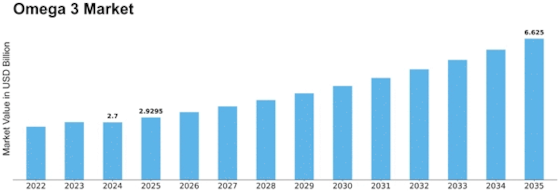

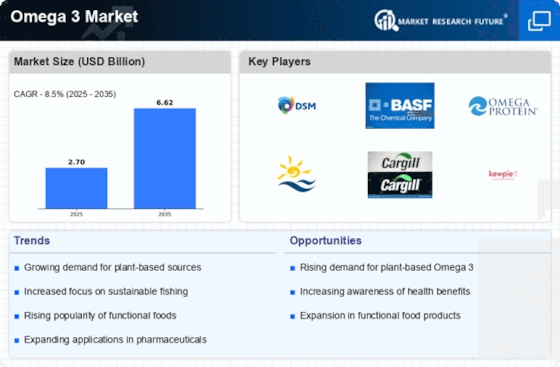
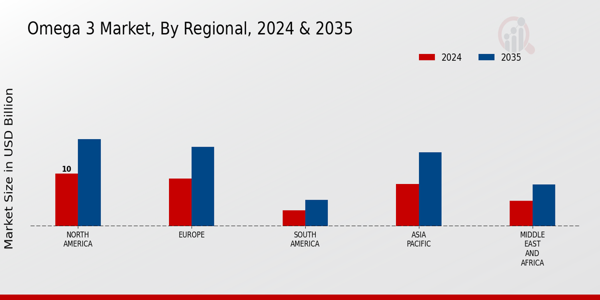

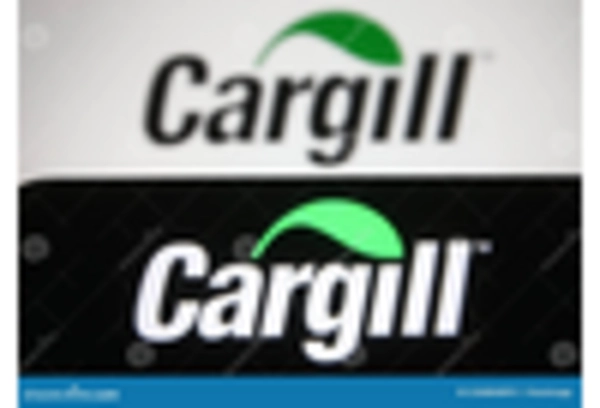



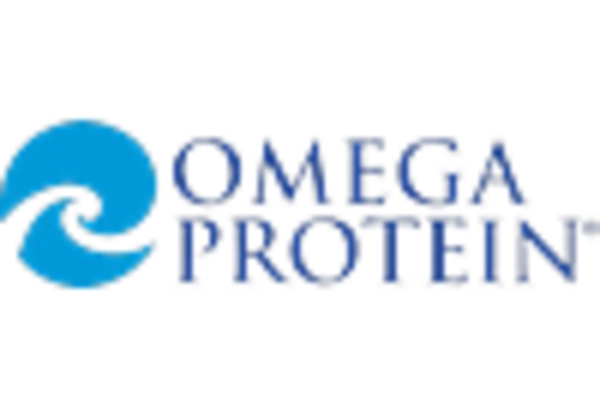

Leave a Comment